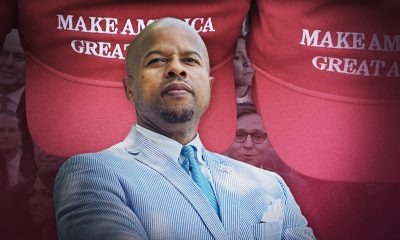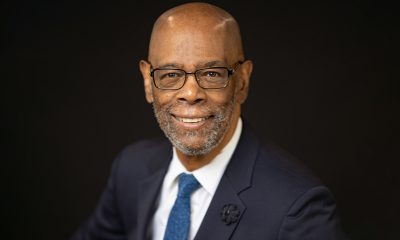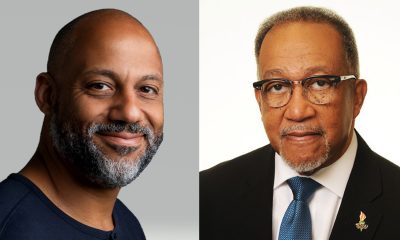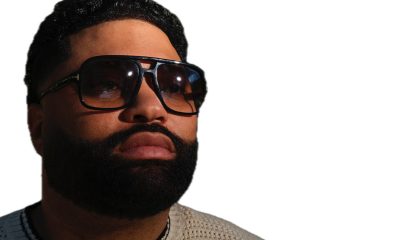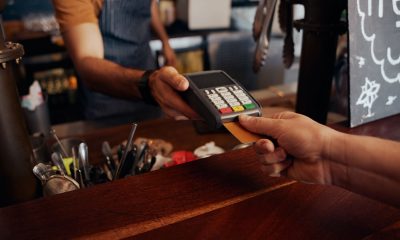Politics
NAACP ‘Journey’ March Focuses on Voting Rights in N.C.
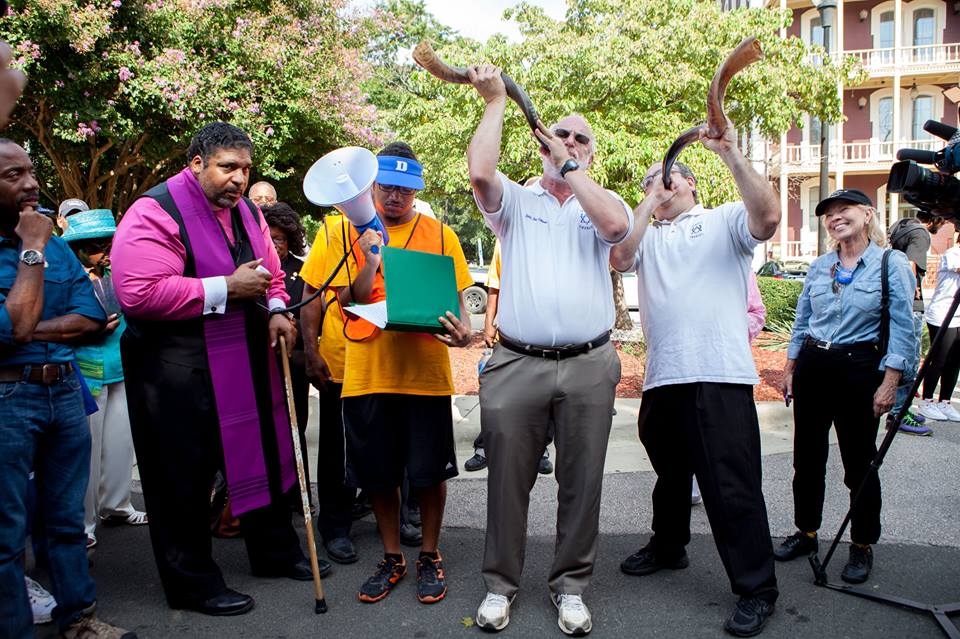
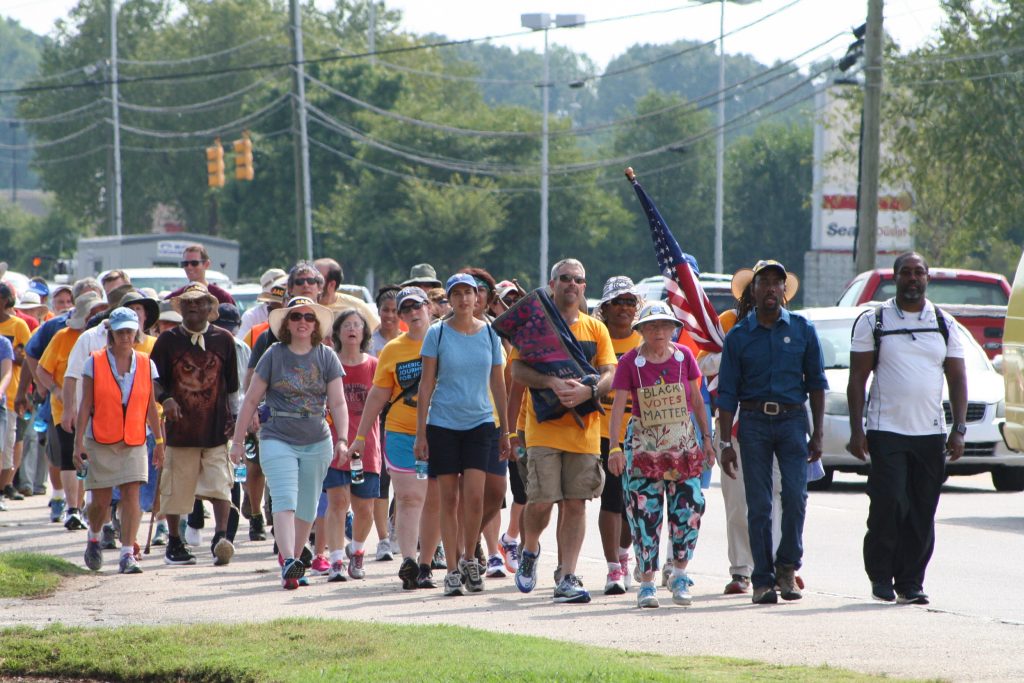
Journey for Justice marchers travel down Wilmington Street toward the State Capitol building in Raleigh. The march was led by 85-year-old Ruth Zalph (left), wearing a Black Lives Matter sign and Cornell William Brooks (right), president of NAACP. (Photos by Afrique Kilimanjaro/Carolina Peacemaker)
By Afrique I. Kilimanjaro
Special to the NNPA from Carolina Peacemaker
RALEIGH, N.C. (NNPA) – America’s Journey for Justice, an 860-mile walk led by the NAACP, is considered the longest walk advocating civil rights in history. The distance traveled in this walk is longer than Mohandas Gandhi’s 240-mile Salt March in 1930 and 17 times the 50 miles marched from Selma to Montgomery, Ala. in 1965.
The journey began August 1 at the Edmund Pettus Bridge in Selma in remembrance of the events of Bloody Sunday where civil rights marchers advocating for voting rights were severely beaten by Alabama State Troopers on March 7, 1965. The starting date of the journey was also near the 50th anniversary of the passage of the Voting Rights Act on August 6, 1965. Cornell Brooks, president of the NAACP and leader of the Journey for Justice, said the march will be carried out by hundreds, if not thousands of people “to demand federal protection of civil rights for all Americans.”
Approximately 13 marchers from Greensboro, N.C. gathered before dawn at Temple Emanuel to travel by van to the small town of Fuquay Varina, a suburb southwest of Raleigh. The group from was comprised of members from Greensboro’s Jewish and Quaker communities, representing Temple Emanuel, Beth David Synagogue and New Garden Friends School. They walked a 12-mile span to Raleigh, demonstrating their solidarity with Journey for Justice participants. Also participating were 15 reform and conservative rabbis who gathered from across the country to march and take turns carrying the Torah (Five Books of Moses).
Temple Emanuel’s Rabbi Fred Guttman and Rabbi Andy Koren sounded shofars each time the march began symbolizing the freedom attained when Joshua sounded the shofar and the walls of Jericho fell. According to Rabbi Koren, the shofar was blown during the journey for justice “in hope that laws such as those restricting voting would come tumbling down like the walls of Jericho.” Rabbi Guttman asked, “Who could have guessed that we would be here 50 years after Selma; that we would be here in a state with the worst voter suppression laws?”
Each Journey for Justice participant walked in pairs flanked by eight NAACP field marshals wearing orange safety vests. The group was led by Brooks, along with people from Selma carrying the U.S. flag. Also present were escorts from the North Carolina Highway Patrol, local law enforcement officers, followed by three buses- including a first aid station and several passenger vans.
North Carolina is at the forefront of the battle over voting rights.
In 2013, the U.S. Supreme Court struck down Section 4b and 5 of the Voting Rights Act of 1965. Section 4b provided a formula that helped determine which jurisdictions would be subjected to preclearance based on their histories of discrimination in voting. Section 5 required certain jurisdictions with a history of discrimination, including North Carolina, to obtain federal preclearance prior to enacting any changes to their voting laws.
In the aftermath of the Shelby County (Ala.) v. Holder decision, the Republican-led North Carolina General Assembly along with, quickly passed the most restrictive set of voting laws in the United States, which was signed into law by Gov. Pat McCrory. The law, H.B. 589, “shortens early voting, eliminates same day registration during the early voting period, prohibits voters from casting out-of-precinct provisional ballots, expands the ability to challenge voters at the polls, eliminates a pre-registration program for 16 and 17 years-olds and requires voters to show a photo ID prior to voting.”
At least two lawsuits challenging H.B. 589 are currently making their way through the federal courts.
“This law is the worst kind of voter ID,” said Rev. William J. Barber, chairman of the N.C. Conference of the NAACP. “It’s the worst attack on voting rights to disenfranchise racial minorities, the poor and young people since Jim Crow. This bill is why we need full implementation of the voting rights act. Supporters of H.B. 589 are trying to suppress the vote in North Carolina in every way possible.”
A bipartisan group of members of Congress introduced the Voting Rights Amendment Act of 2014 (“VRAA”) to overturn the Supreme Court ruling.
America’s Journey for Justice marchers are expected to reach Washington, D.C. later this month.
Rev. Curtis Gatewood, second vice president of the N.C. NAACP, told the marchers and supporters gathered for a Raleigh rally that voting is important. “You’re going to have to vote to elect the sheriff who will hire the deputies. You’re going to have to vote to elect the city council that will hire the police chief. So we want you to understand that voting is an important element in the movement for justice.”



